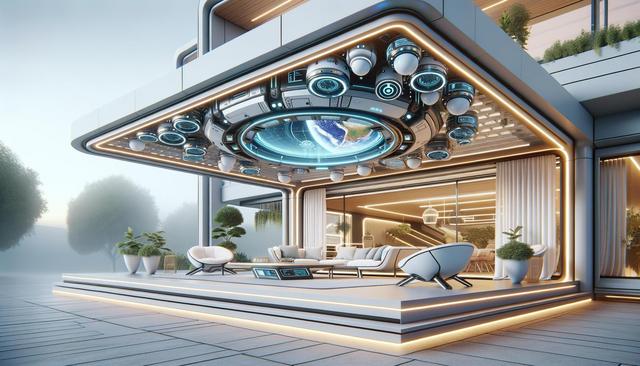Understanding Electric Awning Prices in 2025
The cost of an electric awning in 2025 may range from $1,200 to $3,500, depending on size, materials, and features. Motorized functions, sensors, and custom fabrics can increase the price but add long-term value and convenience.

What Influences the Price of an Electric Awning?
Several factors come into play when determining how much an electric awning will cost in 2025. While the base price typically starts around $1,200, a variety of upgrades and customizations can raise the total significantly. One of the primary influences is the size of the awning. Larger models that cover expansive outdoor spaces require more materials and heavier-duty motors, contributing to a higher cost. Additionally, the type of mounting—whether wall-mounted, roof-mounted, or freestanding—can affect both installation complexity and price.
Other elements that contribute to the overall cost include:
- Frame material: Aluminum frames are lightweight and rust-resistant but may cost more than steel alternatives.
- Fabric quality: UV-resistant, waterproof, and mildew-resistant fabrics typically come at a premium.
- Motor type: Quiet, heavy-duty motors with remote control and smart home integration are often pricier.
- Installation fees: Professional installation can add anywhere from $300 to $700 to the total.
In short, the more advanced the features and the higher the quality of materials, the more you can expect to pay.
Standard Features vs. Premium Add-ons
Electric awnings in 2025 come with a range of standard features, but many homeowners opt for premium upgrades that offer enhanced functionality and aesthetics. A standard model generally includes a motorized extension mechanism, a basic control system (often a wall switch or remote), and weather-resistant fabric. These models are ideal for those who want automation without too many bells and whistles.
Premium add-ons can significantly boost the utility and comfort provided by an electric awning. These may include:
- Sun and wind sensors that automatically retract or extend the awning based on weather conditions.
- Integrated LED lighting for evening use and ambiance.
- Heating elements for cooler seasons.
- Smart home compatibility for voice control and scheduling.
While these features may add $500 to $1,500 to the overall cost, they also increase the awning’s usefulness and may enhance your home’s outdoor living experience.
Material Choices and Their Impact on Cost
The choice of materials used in an electric awning greatly affects its price in 2025. Fabric type, motor technology, and frame construction all contribute to the final cost. Acrylic fabrics are often chosen for their durability and fade resistance, but they are generally more expensive than polyester options. Likewise, solution-dyed fabrics, which hold color longer, can add to the price tag.
Frame materials also play a role. Powder-coated aluminum is both lightweight and corrosion-resistant, making it a popular but slightly more costly option. Steel frames can offer greater strength but may require more maintenance over time. Motor technology has advanced as well, with quieter, more efficient motors now available. These enhancements improve the user experience but come at a higher initial cost.
Here’s a quick breakdown of how materials can influence cost:
- Acrylic fabric: +$200 to $400
- Powder-coated aluminum frame: +$150 to $300
- High-efficiency motor: +$250 to $500
Choosing higher-end materials not only boosts performance but also extends the awning’s lifespan, offering better value over time.
Installation and Maintenance Considerations
Beyond the upfront purchase price, installation and long-term maintenance should be factored into the total cost of owning an electric awning. In 2025, professional installation is still recommended for most setups, particularly for larger awnings or those with complex features like smart sensors and lighting. Installation costs can vary widely depending on the location, structure type, and number of features, typically ranging between $300 and $700.
Maintenance is generally minimal but essential for longevity. For example, fabric should be cleaned seasonally to prevent mildew, and the frame should be checked for signs of wear or rust. Motorized components may occasionally require servicing, especially in climates with extreme weather fluctuations.
To keep maintenance manageable, consider awnings with features like:
- Self-cleaning fabric coatings
- Weather-resistant casings for motors and electrical parts
- Modular parts that are easy to replace
Investing a bit more upfront in quality craftsmanship and durable materials can reduce long-term maintenance costs and extend service life.
Market Trends and Future Projections
As smart home technology continues to advance, electric awnings are evolving to meet new consumer expectations. In 2025, more models are expected to feature app connectivity, automation capabilities, and integration with other smart systems such as lighting and climate controls. These innovations are likely to influence pricing in the coming years.
Market trends also show a growing demand for sustainable materials and energy-efficient products. Eco-conscious fabrics and solar-powered awning motors are beginning to enter the market, potentially adding to the cost but aligning with green home initiatives. Customization is another trend, with consumers increasingly seeking personalized designs, colors, and branding for residential and commercial spaces alike.
Expect to see prices remain stable for standard models but rise for highly customized or tech-integrated options. Keeping an eye on these trends can help you make a more informed decision when planning your purchase.
Conclusion
In 2025, the price of an electric awning will largely depend on your unique needs and preferences. While basic models offer reliable functionality at a more accessible price, those seeking advanced features, premium materials, and smart home integration should prepare for a higher investment. Understanding the various factors that influence cost—from materials and features to installation and market trends—will help you choose the right solution for your space. Whether enhancing a patio, balcony, or storefront, electric awnings continue to offer practical value and convenience for modern outdoor living.